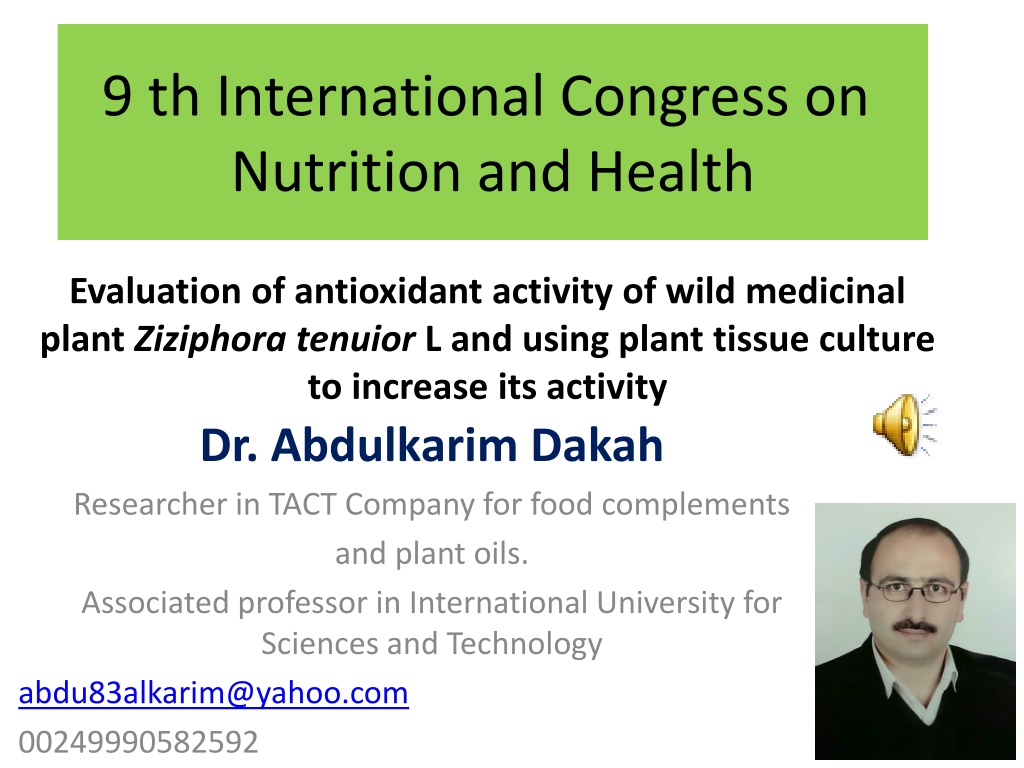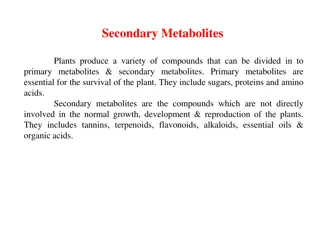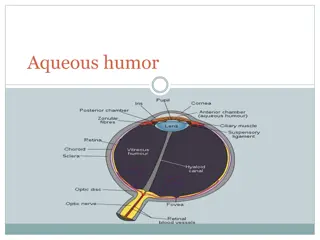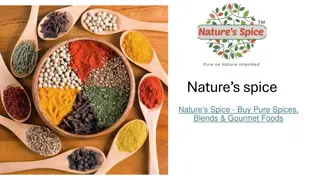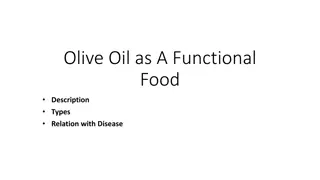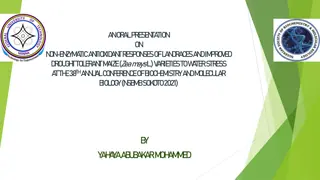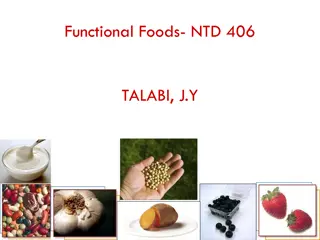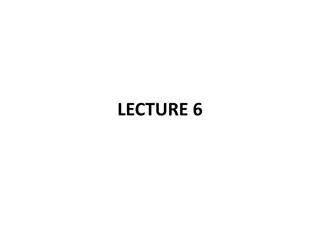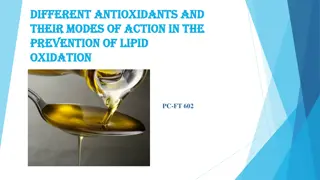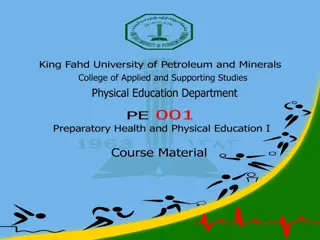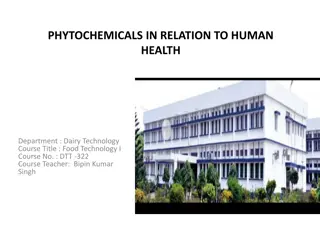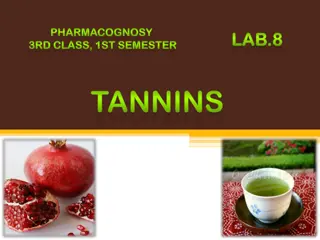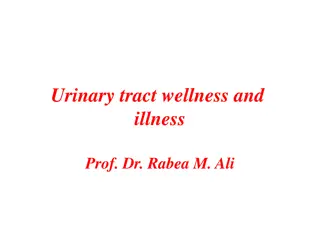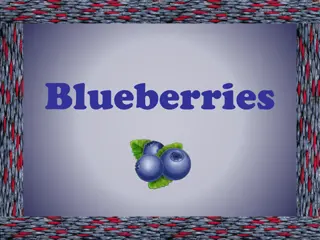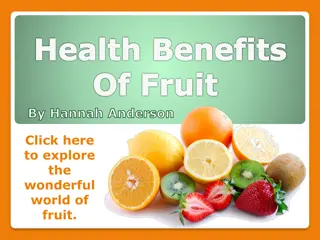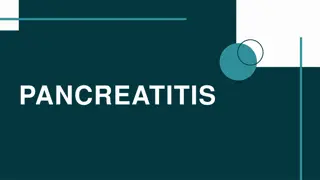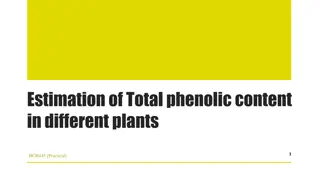Understanding the Role of Antioxidants in Health: Insights from Dr. Abdulkarim Dakah's Research
Dr. Abdulkarim Dakah's research focuses on evaluating the antioxidant activity of the wild medicinal plant Ziziphora tenuior and using plant tissue culture to enhance its effectiveness. He discusses Reactive Oxygen Species (ROS), diseases caused by ROS, methods to reduce ROS in the body, and the importance of plant tissue culture in medicinal plants. The research sheds light on the potential benefits of Ziziphora tenuior and the significance of antioxidants in maintaining health.
Download Presentation

Please find below an Image/Link to download the presentation.
The content on the website is provided AS IS for your information and personal use only. It may not be sold, licensed, or shared on other websites without obtaining consent from the author. Download presentation by click this link. If you encounter any issues during the download, it is possible that the publisher has removed the file from their server.
E N D
Presentation Transcript
9 th International Congress on Nutrition and Health Evaluation of antioxidant activity of wild medicinal plant Ziziphora tenuior L and using plant tissue culture to increase its activity Dr. Abdulkarim Dakah Researcher in TACT Company for food complements and plant oils. Associated professor in International University for Sciences and Technology abdu83alkarim@yahoo.com 00249990582592
What are the Reactive oxygen species (ROS)? Dr. Abdulkarim Dakah
What are the diseases by ROS? Dr. Abdulkarim Dakah
How can we reduce ROS in our body? Dr. Abdulkarim Dakah
Plant tissue culture and medicinal plants Dr. Abdulkarim Dakah
Importance of Plant tissue culture Dr. Abdulkarim Dakah
Ziziphora tenuior Dr. Abdulkarim Dakah
Why Z. tenuior? Dr. Abdulkarim Dakah
Extract type (Growth regulators combination) IC50(mg/ml) Methanol extract of wild plant 9.229 0.144 f Aqueous extract of wild plant 0.516 0.001 b Methanol extract of plant (0.5 Kin + 0.1 NAA) Aqueous extract of plant (0.5 Kin + 0.1 NAA) Methanol extract of plant (1 Kin + 0.1 NAA) Aqueous extract of plant (1 Kin + 0.1 NAA) Methanol extract of plant (1.5 Kin + 0.1 NAA) Aqueous extract of plant (1.5 Kin + 0.1 NAA) Methanol extract of plant (0 Kin + 0 NAA) Aqueous extract of plant (0 Kin + 0 NAA) 8.712 0.016 e 0.399 0.011 ab 8.452 0.016 d 0.369 0.001 a 8.026 0.013 c 0.307 0.001 a 8.832 0.035 e 0.411 0.007 ab
Conclusions we can use plant tissue culture to increase the active substance. our results showed that the water extracts of in vitro produced plants showed an increase in antioxidant activity as compared to the starting material (wild plant). Dr. Abdulkarim Dakah
